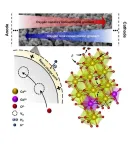Monitoring daily activity patterns using a wrist-worn device may detect early warning signs of Alzheimer’s disease, according to a new study led by researchers at the Johns Hopkins Bloomberg School of Public Health.
The researchers analyzed movement data from wristwatch-like devices called actigraphs worn by 82 cognitively healthy older adults who were participants in a long-running study of aging. Some of the participants had detectable brain amyloid buildup as measured by PET scan. Buildup of the protein amyloid beta in the brain is a key feature of Alzheimer’s disease.
Using a sensitive statistical technique, the researchers found significant differences between this “amyloid-positive” group and “amyloid-negative” participants in mean activity in certain afternoon periods and differences in variability of activity across days in a broader range of time windows.
The new study was published online February 21 in the journal SLEEP.
“We need to replicate these findings in larger studies, but it is interesting that we’ve now seen a similar difference between amyloid-positive and amyloid-negative older adults in two independent studies,” says Adam Spira, PhD, professor in the Department of Mental Health at the Bloomberg School.
The new study’s results partly confirm findings from an earlier study in a smaller sample, also led by Spira, and suggest that actigraphs someday could be a tool to help detect incipient Alzheimer’s disease before significant cognitive impairment sets in. Data from the prior study came from participants in the Anti-Amyloid Treatment in Asymptomatic Alzheimer’s (A4) and the Longitudinal Evaluation of Amyloid Risk and Neurodegeneration (LEARN) studies.
For their new study, Spira and colleagues investigated the potential of actigraph-based monitoring in 82 community-dwelling individuals whose average age was about 76. Each participant had a PET scan to measure brain amyloid and wore an actigraph 24 hours per day for one week. Using a sensitive statistical technique called FOSR (function-on-scalar regression), the researchers found that the 25 amyloid-positive participants, compared to the 57 amyloid-negative participants, had higher mean activity during the early afternoon, 1:00 to 3:30 p.m., and less day-to-day variability in activity from 1:30 to 4:00 p.m. and 7:30 to 10:30 p.m.
In more conservative analyses, some of these time windows with differences were no longer statistically significant. Nonetheless, the higher afternoon activity and lower afternoon variability echoed the investigators’ prior findings.
Alzheimer’s disease, the leading cause of dementia, is estimated to affect more than 6 million older adults in the U.S. The Alzheimer’s disease process is still not fully understood but is characterized by amyloid plaques and tangles in the brain, which typically begin to accumulate a decade or two before Alzheimer’s is diagnosed.
The only approved treatments that may slow the disease course are those that target amyloid beta and reduce the plaques. Many researchers believe that such treatments can be much more effective if given earlier in the disease course—ideally, years before dementia becomes evident.
Abnormal patterns of sleep and waking activity have been studied as potential early indicators of Alzheimer’s. Alzheimer’s patients typically have abnormal sleep-wake rhythms, and prior studies have found evidence that amyloid accumulation may disrupt sleep-wake rhythms relatively early in the disease process. There is also evidence that sleep loss promotes amyloid accumulation, suggesting a “vicious circle.”
Such findings hint at the possibility that older adults might someday, among other measures, wear wristwatch-like devices that would automatically track and analyze their sleep and waking activity. Individuals with anomalous activity patterns could then consult their physicians for more in-depth Alzheimer’s screening.
The individuals in the new study were participants in a long-running study, the Baltimore Longitudinal Study of Aging, which is conducted by the Intramural Research Program of the National Institute on Aging (NIA), part of the National Institutes of Health (NIH). Several members of the NIA team were co-authors of the study.
Standard, non-FOSR statistical methods did not detect any significant differences in activity or sleep patterns, suggesting the methods may be less sensitive to amyloid deposition.
In the earlier actigraphy study, the researchers, using FOSR-based analyses in a different sample of 59 participants, found increases in mean activity in afternoon hours and differences in variability, including lower variability in the afternoon, among amyloid-positive participants.
The scientists don’t know why amyloid buildup would trigger differences in activity patterns during these particular times of day. They note that there is a well-known phenomenon among individuals with Alzheimer’s disease called “sundowning,” in which agitation increases in the afternoon and early evening.
“It’s conceivable that the higher afternoon activity we observed is a signal of ‘preclinical sundowning,’” Spira says. “At the same time, it’s important to note that these findings represent averages among a small sample of older people over a short period of time. We can’t predict whether an individual will develop amyloid plaques based on the timing of their activity. So, it would be premature for older people to be concerned because their fitness trackers say they are particularly active in the afternoon, for example.”
He and his colleagues plan to do larger studies of this kind. They also hope to do longer-term studies to see if daily activity-pattern changes are associated not only with brain amyloid but also with actual cognitive decline.
“Evaluating a Novel 24-Hour Rest/Activity Rhythm Marker of Preclinical β-Amyloid Deposition” was co-authored by Adam Spira, Fangyu Liu, Vadim Zipunnikov, Murat Bilgel, Jill Rabinowitz, Yang An, Junrui Di, Jiawei Bai, Sarah Wanigatunga, Mark Wu, Brendan Lucey, Jennifer Schrack, Amal Wanigatunga, Paul Rosenberg, Eleanor Simonsick, Keenan Walker, Luigi Ferrucci and Susan Resnick.
Support for the research was provided by NIH (R01AG050507, HHSN-260-2004-00012C).
# # #
END






